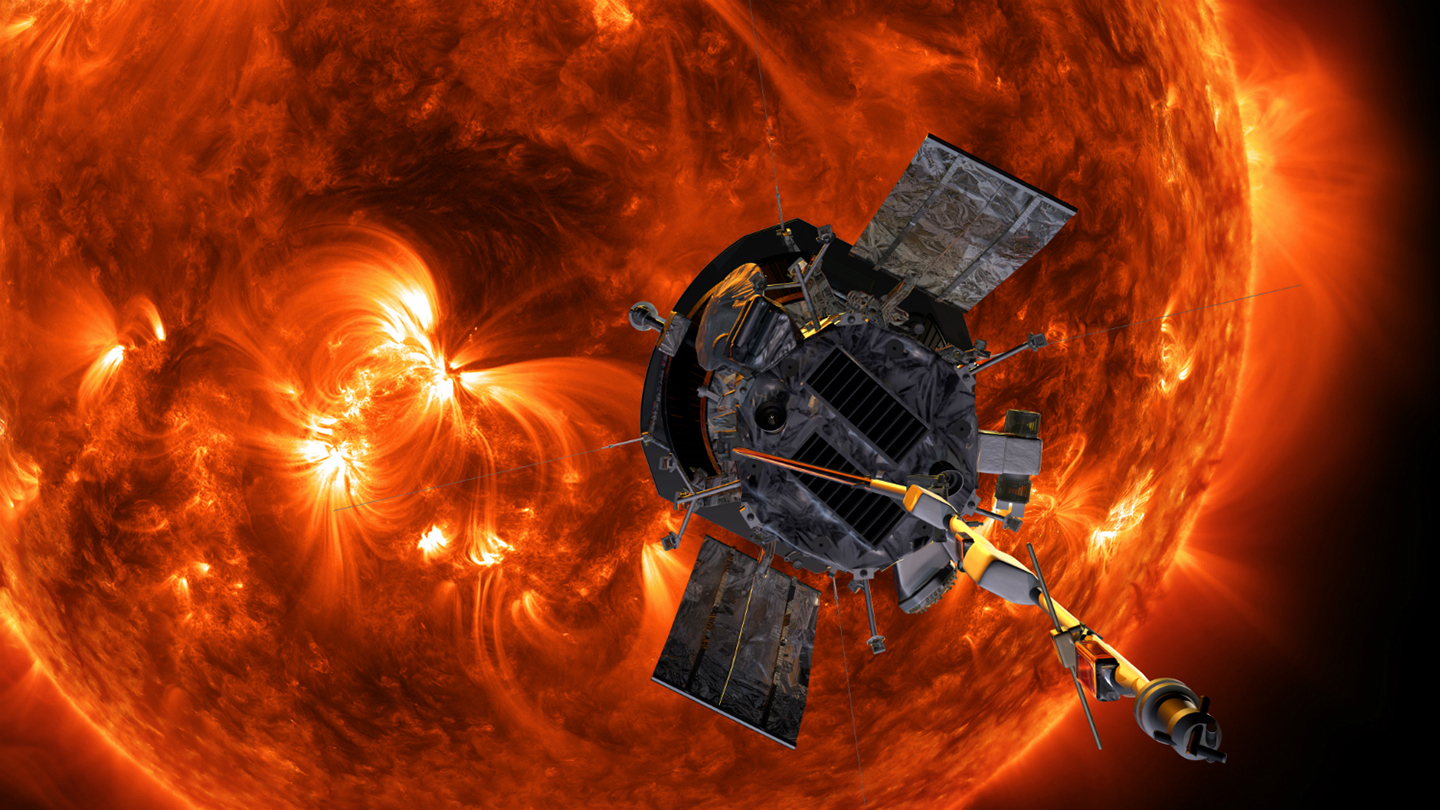Press Release
Fastest, Hottest Mission Under the Sun: Parker Solar Probe Sets New Records
Parker Solar Probe, designed, built and operated by Johns Hopkins APL, now holds two operational records for spacecraft, both of which it will repeatedly break during its seven-year mission to our star.
Parker Solar Probe is now the closest spacecraft to the Sun; it passed the current record of 26.55 million miles from the Sun’s surface on Oct. 29 at about 1:04 p.m. EDT, as calculated by the Parker Solar Probe team. As the mission progresses, the spacecraft will make a final close approach of 3.83 million miles from the Sun’s surface, expected in 2024.
At about 10:54 p.m. EDT on Oct. 29, Parker Solar Probe surpassed 153,454 miles per hour, making it the fastest human-made object relative to the Sun. The spacecraft will also accelerate over the course of the mission, achieving a top speed of about 430,000 miles per hour in 2024.
The previous records for closest solar approach and speed were set by the German-American Helios 2 spacecraft in April 1976.
“It’s been just 78 days since Parker Solar Probe launched, and we’ve now come closer to our star than any other spacecraft in history,” said Project Manager Andy Driesman of APL’s Space Exploration Sector. “It’s a proud moment for the team, though we remain focused on our first solar encounter, which begins on Oct. 31.”
The Parker Solar Probe team periodically measures the spacecraft’s precise speed and position using NASA’s Deep Space Network, or DSN. The DSN sends a signal to the spacecraft, which then retransmits it back to the DSN, allowing the team to determine the spacecraft’s speed and position based on the timing and characteristics of the signal. Parker Solar Probe’s speed and position were calculated using DSN measurements made up to Oct. 24, and the team used that information along with known orbital forces to calculate the spacecraft’s speed and position from that point on.
Parker Solar Probe will begin its first solar encounter on Oct. 31, continuing to fly closer and closer to the Sun’s surface until it reaches its first perihelion — the point closest to the Sun — at about 10:28 p.m. EST on Nov. 5, at a distance of about 15 million miles. The spacecraft will face brutal heat and radiation while providing humanity with unprecedentedly close-up observations of a star and helping us understand phenomena that have puzzled scientists for decades. These observations will add key knowledge to our understanding of the Sun, where changing conditions can propagate out into the solar system, affecting Earth and other worlds.
